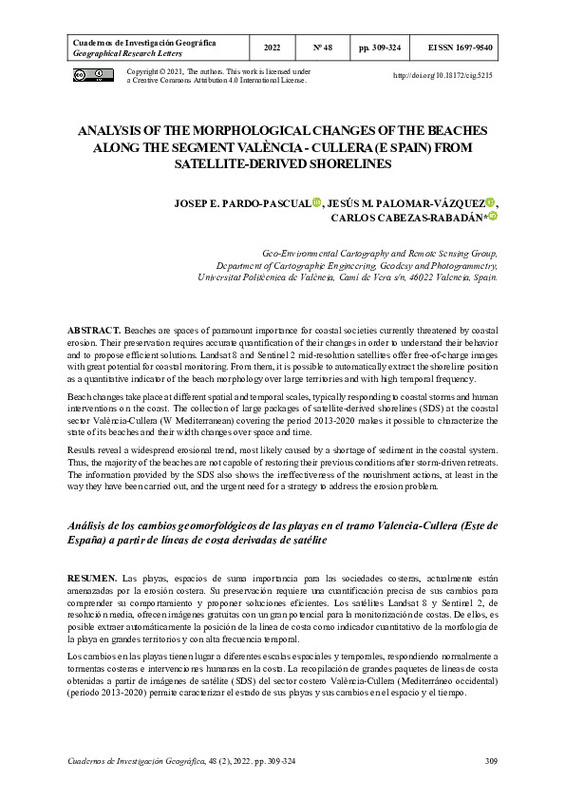JavaScript is disabled for your browser. Some features of this site may not work without it.
Buscar en RiuNet
Listar
Mi cuenta
Estadísticas
Ayuda RiuNet
Admin. UPV
Analysis of the morphological changes of the beaches along the segment València - Cullera (E Spain) from satellite-derived shorelines
Mostrar el registro completo del ítem
Pardo Pascual, JE.; Palomar-Vázquez, J.; Cabezas-Rabadán, C. (2022). Analysis of the morphological changes of the beaches along the segment València - Cullera (E Spain) from satellite-derived shorelines. Cuadernos de Investigación Geográfica. 48(2):309-324. https://doi.org/10.18172/cig.5215
Por favor, use este identificador para citar o enlazar este ítem: http://hdl.handle.net/10251/197441
Ficheros en el ítem
Metadatos del ítem
| Título: | Analysis of the morphological changes of the beaches along the segment València - Cullera (E Spain) from satellite-derived shorelines | |
| Autor: | ||
| Entidad UPV: |
|
|
| Fecha difusión: |
|
|
| Resumen: |
[EN] Beaches are spaces of paramount importance for coastal societies currently threatened by coastal erosion. Their preservation requires accurate quantification of their changes in order to understand their behavior and ...[+]
|
|
| Palabras clave: |
|
|
| Derechos de uso: | Reconocimiento (by) | |
| Fuente: |
|
|
| DOI: |
|
|
| Editorial: |
|
|
| Versión del editor: | http://doi.org/10.18172/cig.5215 | |
| Código del Proyecto: |
|
|
| Agradecimientos: |
This work is part of the MONOBESAT project (PID2019-111435RB-I00) funded by the Spanish Ministry of Science, Innovation, and Universities. The authors thank ESA and USGS for the access to the satellite images, Puertos del ...[+]
|
|
| Tipo: |
|









